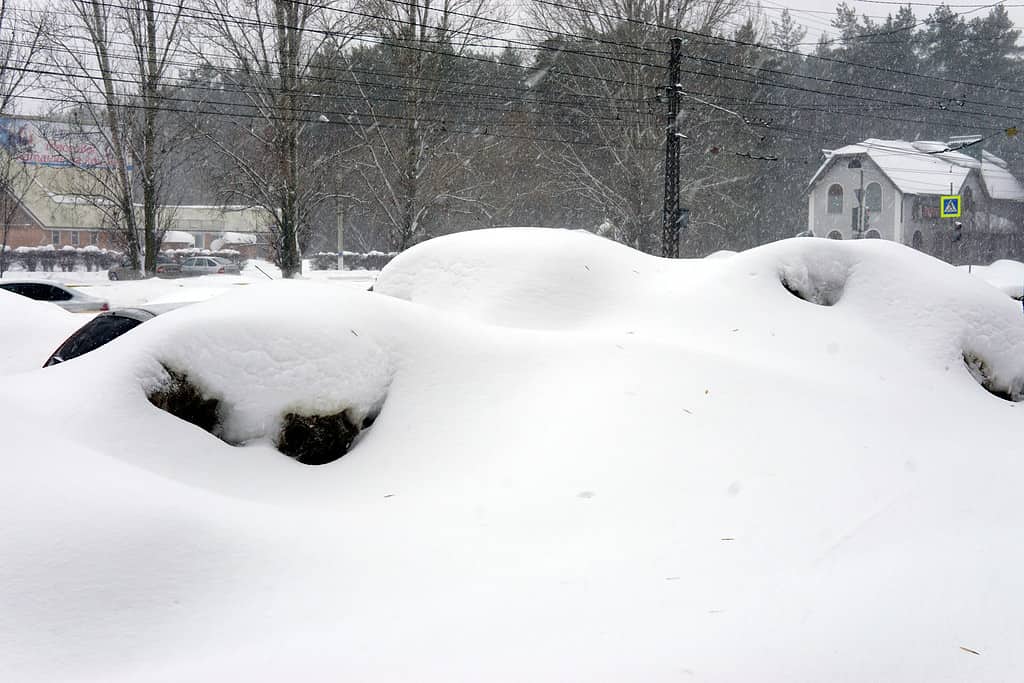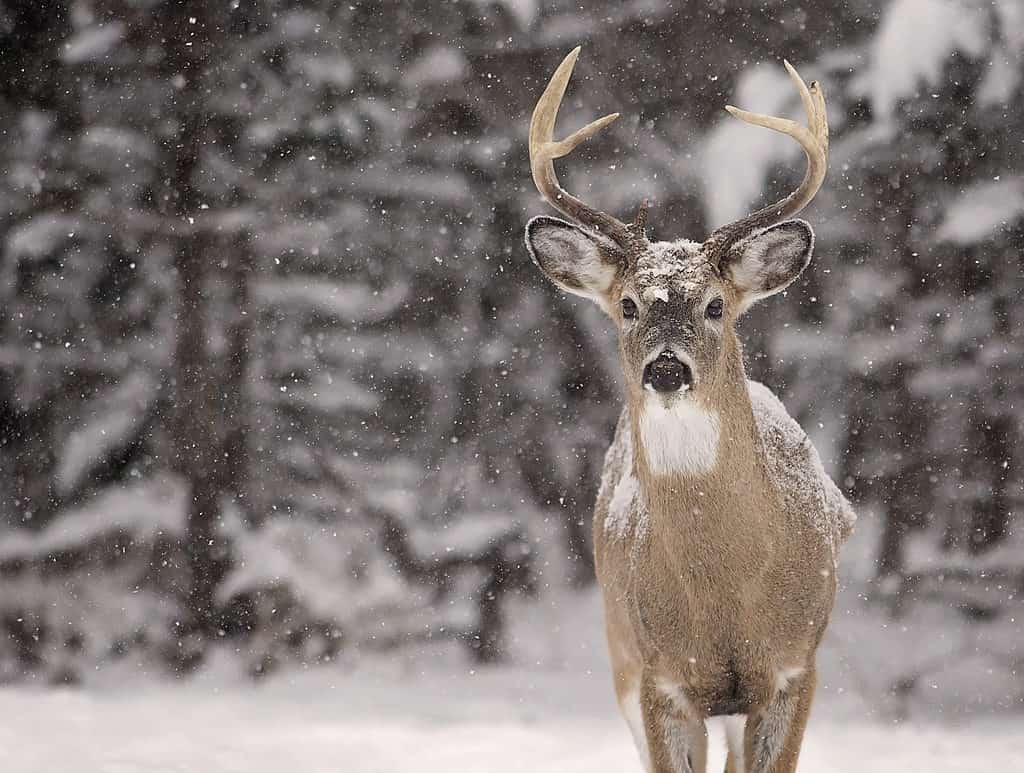The humid climate of Virginia features extremely warm summers and relatively chilly winters. The state’s varied topography, which includes the Appalachian and Blue Ridge Mountains in the west and the Atlantic coastline region in the east, contributes to the state’s significant regional diversity in climate. The Eastern and southeastern coastal regions of the Commonwealth are strongly influenced by the Atlantic Ocean and Gulf Stream, which warm and stabilize the climate.
These geographical characteristics have a substantial impact on temperature and rainfall patterns, with the west and north typically being cooler and drier than the coastal region in the east.
The average low temperature of 25 °F (4 °C) in January and the average high temperature of 86 °F (30 °C) in July characterize variations in seasonal extremes.
Virginia experiences a yearly average rainfall of 43.49 inches (110 cm). As a result, the Blue Ridge Mountains and other locations to the west have experienced most of Virginia’s documented rain and temperature extremes.
The Shenandoah Valley is the state’s driest area because of the mountains on both sides. Cold-air damming due to the Appalachian Mountains induces heavy snowfalls across the state, usually from December to March.
On July 15, 1954, the state’s highest temperature recorded was 110 °F at Balcony Falls, while its record-low temperature was -30°F experienced at Mountain Lake on January 21, 1985.

On July 15, 1954, the state’s highest temperature recorded was 110 °F at Balcony Falls, while its record-low temperature was -30°F experienced at Mountain Lake on January 21, 1985.
©Gerry Bishop/Shutterstock.com
What Was the Biggest March Snowstorm in Virginia?
The occasional severity of Virginia’s winters is known to those familiar with the state, despite the regular mild description of the season. However, the Old Dominion usually has some surprises, from subzero temperatures and brutal winds to record amounts of snowfall.
The March 12, 1993, snowstorm, also known as the 93 Superstorm, Storm of the Century, and Great Blizzard of 93, was the most powerful snowstorm recorded by Virginia. It came with heavy rain, cold air, and hurricane-force wind, which led to a blizzard over the impacted areas. It was so extensive that it engulfed 26 states and some parts of eastern Canada.
The mid-March snowstorm was not only unusual, but it was also the strongest Mid-Latitude cyclone ever recorded in the eastern United States.
It was a turning point in American weather forecasting. Medium-range forecasters at the United States National Weather Service and many operational numerical weather prediction models had identified the potential for a great blizzard by March 8. As a result, national Weather Service meteorologists could anticipate a system’s severity with accuracy five days in advance for the first time ever.
Once shorter-range models started supporting the forecasts, the government issued official blizzard warnings two days before the storm arrived.
Before the snow started to fall, many northeastern states declared a state of emergency, and forecasters had gained enough confidence in the computer-forecast models to justify their decision.
The early notice enabled authorities to remove through-hikers from the Appalachian Trail before the snowstorm started forming.

The mid-March snowstorm was not only unusual, but it was also the strongest Mid-Latitude cyclone ever recorded in the eastern United States.
©Alexei Korshunov/Shutterstock.com
Timeline of the Snowstorm
On a Friday evening in 1993, following a warm day in the 40s and 50s, the Blizzard of 1993 hit Virginia. A powerful low-pressure system was moving northeast out of the Gulf of Mexico and into the Southeast United States, bringing plenty of moisture from the Gulf of Mexico and triggering an Arctic air mass over the Eastern United States.
It continued snowing on Saturday, covering most of the state with 1-3 feet of heavy snow. Unfortunately, this was followed by a few unusually chilly mornings late in the season, with several lows in the single digits. The snowstorm shattered trees and paralyzed much of the state for over a week. It raged for 72 hours, producing almost 60,000 lightning strikes.
Snowfall in West Virginia’s Snowshoe peaked at 40 inches and over 50 inches in North Carolina’s highest terrain. As a result, it’s possible that some of Virginia’s 4,000+ heights exceeded 3 feet.
Since January 1987, more than six years before the Blizzard of 1993, only isolated, high-elevation areas of the state had seen snowfall of at least one foot. The most recent widespread foot-plus snowstorm, which fell on December 9, 2018, occurred less than five years ago.
Impact of the Snowstorm

As the storm began to pour snow, plow personnel used every resource at their disposal to clear the roadways.
©iStock.com/kevinmwalsh
As the storm began to pour snow, plow personnel used every resource at their disposal to clear the roadways. Unfortunately, although the snowfall totals were spectacular, the accompanying wind caused drifts as high as 5 to 10 feet in some New River Valley and Highlands areas. This made it difficult for the plow crew to make progress.
The Vinton LancerLot sports complex collapsed under the weight of the snow, forcing the relocation of the Virginia Lancers hockey team to Roanoke, where they subsequently changed their name to the Roanoke Express.
The snow’s weight also caused damage to the Dedmon Center at Radford University and a Lowe’s store in Christiansburg.
The Storm of the Century remains one of the costliest and bloodiest catastrophes of the 20th century when you consider its impacts on people. It was even more devastating than most hurricanes and tornadoes.
The snowstorm claimed the lives of more than 270 people in 13 different states, including 12 in Virginia.
The storm effectively shut down almost every interstate highway from Atlanta to the northeast. In Southwest Virginia, many motorists were trapped along interstates. In addition, all of the East Coast’s main airports were closed at some point.
Power outages lasted up to three weeks in many remote areas before they were repaired, and power disruptions were experienced throughout the eastern United States.
What is the Typical March Weather in Virginia?
With temperatures ranging from 39°F (4 °C) to 57 °F(14°C, March is a fairly cold month in Virginia. In Virginia, March brings 3 to 8 days of rain on average. A few snowy days are also nothing out of the ordinary.
How Do Late-Season Snowstorms Impact Wildlife in Virginia?

Snowfall puts their perseverance to the ultimate test, and it takes extreme resourcefulness for the animals to survive during the winter.
©iStock.com/Lynn_Bystrom
Many wild animals can adapt to their environment. Still, they may be averse to exposure to stormy weather and other challenging conditions. When a late-season snowstorm occurs, some species find shelter in temporary habitats. In contrast, others use their coats or feathers for warmth and shield.
Snowfall puts their perseverance to the ultimate test, and it takes extreme resourcefulness for the animals to survive during the winter. Animals use one of three basic coping mechanisms to endure the bitterly cold winters. They include migration, perseverance, and torpor.
Birds
Virginia has many winter birds, some of which are year-round inhabitants of the state. They include woodpeckers, cardinals, chickadees, jays, titmice, and many more. Some, such as white-throated sparrows and dark-eyed junco, are migrants from the north and the mountains.
A severe late-season snowstorm can be harmful to these bird species. To survive, they typically take cover in their frequented spots, puff their feathers, fatten up, and position themselves so they won’t get dumped.
They are primarily seed-eating birds that need all the supplementary food supplies they can get through bird feeders. So simply scattering some seed on the snow and probably the squirrels will benefit them.
In the winter, birds, particularly Carolina chickadees, may concentrate their feeding efforts in one spot. If that location is without food, the birds may be in difficulty since they may not have a backup plan. Therefore, if you start providing food for birds in the winter, continue doing so, or the birds may become accustomed to your feeder and not know where else to go.
Squirrels
Depending on the species, squirrels have different wintertime behavioral adaptations. For example, they have adapted to relying on food caches or body fat reserves for feeding. However, younger squirrels are more vulnerable because they are slim.
Tree squirrel species seek shelter in their dreys and thus are less impacted by the snowstorm. Ground squirrels, the actual hibernating squirrel species, hibernate in their burrows to shield themselves when temperatures dip.
White-tailed Deer
The ubiquitous deer will typically get some winter rest, wait out a snowstorm, or move more slowly than they would otherwise. They resume activity as soon as it clears up.
In the winter, does take charge and may occasionally chase other deer away as they seek food. They are browsers and will feed on anything they get their hands on. However, this could pose a problem if there is more than a foot of snow.
Rabbits
Winter doesn’t see rabbits hibernating or going into torpor because they must consume continuously throughout the year for survival. However, they might find themselves in danger after a snowstorm; they will crave food, just like everyone else.
They usually stay close to reliable food sources such as pine needles, lawn plants, and tree bark. They often huddle up in their search for an accessible cover, such as porches or awnings, switching between shelters until they locate a suitable refuge close to a food source. This is part of their reactions to snowstorms.
When unable to locate food or shelter, they will continue to move until they are safe and have access to food. This quest often leads them to people’s houses, and they won’t hesitate to use them for refuge and food, especially in snowstorms.
Opossums
The winter months and likely snowstorms are challenging for opossums. They are unable to hibernate, and their fur doesn’t offer much insulation. Thus, they often get frostbite in harsh winters.
They usually try to wait out snowstorms by going into a raccoon-like torpor inside their caves. Their dens are high up in trees, making it tough to escape during snowstorms.
In the fall, they prepare for winter by stuffing their dens with leaves and grass to keep them warm. They also stockpile food for later use.
Raccoons
The torpor stage that raccoons enter is similar to hibernation. However, it is not as long-lasting as it is for actual hibernators. They are in a hollow log or another animal’s burrow. The snow cover, rather than the cold, is the main reason raccoons are usually dormant during this time of year.
They prepare for torpor by accumulating fat reserves, particularly in their huge tails. Their fat reserves provide them with long-term sustenance in their dormancy. But, they would need to get up every few weeks to restock their supplies.
Replenishing their caches can be problematic if they wake up in the middle of a snowstorm. Little groups of raccoons may also den together in the winter to keep one another warm.
They rarely leave their dens and prefer to graze on any available food instead of venturing far. However, they don’t mind the distance if the food isn’t nearby. Dumpsters are a particular favorite of theirs, especially in the winter. Raccoons could construct a brand-new den nearby if they discover a reliable food source.
Bats
Bats go into hibernation in the winter. Their heartbeat, respiration, and metabolic rate become slower, and they remain inactive till the end of winter. However, fall is spent gaining more weight, so they’re good.
The photo featured at the top of this post is ©
Thank you for reading! Have some feedback for us? Contact the AZ Animals editorial team.







